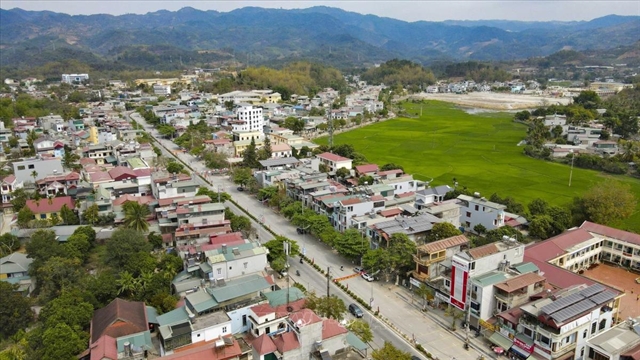 Life & Style
Life & Style

Mã Pí Lèng Pass is a dangerous pass, some 20km long at heights of 1,200 – 1,400m above sea level.
Hà Giang, the northernmost province in the country, hosts various historical areas like Lũng Cú Flag Pole and Đồng Văn Karst Plateau, a UNESCO Global Geopark.
To reach the sites, people have to travel on National Road No 4C, or Happiness Road, which has been dubbed a legendary road with famed proper names including Quản Bạ Heaven Gate, Fairy Mountain (Twin Mountain), Pắc Xum Slope, Thẩm Mã Pass and Mã Pì Lèng Pass.
.jpg)
|
| An areal view of Happiness Road. VNS Photo Trương Vị |
The latter pass is one of four most beautiful passes in the north together with Ô Quý Hồ Pass linking Lào Cai and Lai Châu Province, Pha Đin Pass in Sơn La Province and Khau Phạ Pass in Yên Bái Province.
.jpg)
|
| The Nho Quế River runs at the foot of the mountain. Happiness Road runs on Mã Pì Lèng Pass up to the peak. VNA/VNS Photo Nhật Anh |
The pass is located on National Road 4C in Pải Lủng and Pả Vi communes, Mèo Vạc District of Hà Giang. Mả Pí Lèng in Mông language means a horse’s nose with the figurative meaning that the peak is quite dangerous, where even mountain horses may slip and die when climbing.
.jpg)
|
| High steep cliffs when there was no road. VNA/VNS File Photo |
Happiness Road links Hà Giang City with Đồng Văn Town and Mèo Vạc Town.
Mã Pí Lèng Pass is a dangerous pass, some 20km long at heights of 1,200 – 1,400m above sea level.
.jpg)
|
| Thousands of young volunteers worked to build Happiness Road. VNA/VNS File Photo |
The mountain was created by the sediment of karst stone and silica limestone containing fossils from some 400 million years ago. The site also features cracks from geographical changes creating dangerous landscapes of steep cliffs and the Nho Quế River running in the middle of Mã Pì Lèng Pass and Xín Cái Pass, which hosts the boundary milestone and Săm Pun Border Gate with China.
French people came to examine the site in 1900 and hoped to build roads there, but could not do anything except provide food and ammunition to guard troops on local mountains using small lanes.
Before the Happiness Road was built, the more than 80,000 residents in the area traversed the Mã Pí Lèng Pass by hanging on ropes to climb over high cliffs.
Construction of Happiness Road began on September 10, 1959, linking Hà Giang, Đồng Văn and Mèo Vạc.
After six years of construction, more than 1,300 young volunteers, mostly working by hand, completed the road on June 15, 1965.
The road has helped improve the lives of locals and has become a tourist magnet. VNS
.jpg)
|
| The road has changed locals' lives. VNA/VNS Photo Minh Tâm |




